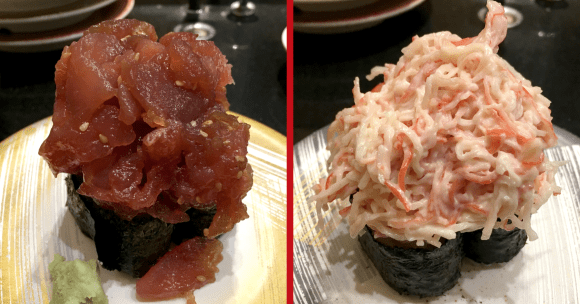
They’re not called “mountain-sized servings” for nothing.
In Japan, extra-large orders of food in restaurant are usually called omori, which literally means “big serving.” That’s not the only term that can be used for jumbo-sized edibles, though. There’s also yamamori, or “mountain serving.”
A proper yamamori has the appearance of mountain, and as such you’ll often see the term used in describing jumbo-sized orders of foods that can be piled up, like rice or pasta. But at revolving sushi restaurant Miura Misakiko, there’s also yamamori sushi, and we stopped by the chain’s branch in Tokyo’s Ueno neighborhood to do a little culinary mountaineering.
Appropriately, the restaurant is located right at the start of the network of shopping arcades collectively called Ameya Yokocho. After World War II, Ameya Yokocho was the site of one of the city’s largest black markets, and while the area’s transactions are on the up-and-up these days, Ameyoko (as Ameya Yokocho is also known) is still known as a place to find a good bargain if you’re willing to buy in bulk.
We sat down at the counter, and as we waited for something tasty to slide up on the conveyor belt, we looked at the menu, which prominently displayed the restaurant’s lineup of yamamori sushi.
The yamamori sushi is prepared in the gunkan, or “battleship” style. That means the ingredients are ringed by a strip of dried seaweed, which gives the whole thing a bit more structural integrity. And really, these mammoth morsels need all the support they can get because of their huge size.
We decided to eat as many as we could fit in out stomach, which, given how big they are, wasn’t very many. Still, there’s always room for maguro (tuna), right?
Next up were some amaebi (shrimp), which were almost intimidating in their show of strength in numbers.
Traditional table manners hold that sushi should be popped into the mouth whole and eaten in a single bite. That’s not possible with Miura Misakiko’s yamamori, though, so no one seemed offended when we used our chopsticks to eat a couple of mouthfuls of topping before polishing off the rice, seaweed, and remaining seafood in one final bite.
▼ A veritable forest of kani (crab) salad
Cultured gourmands know that the word sushi actually doesn’t refer to raw fish, but to the vinegared rice it’s placed atop. While these behemoths all technically still count as sushi, their ratio of topping to rice is so heavily loaded towards the former that it’s easy to forget about the rice’s existence until you finally eat your way down to the bottom of a piece.
▼ Engawa (flounder fin)
Like at most revolving sushi restaurants, these yamamori are served with two pieces to a plate. Each plate costs between 340 and 660 yen (US$3 to $5.90), but considering how much you’re getting for that price, it’s a pretty attractive deal. The quality is more than adequate, and that sense of satisfaction goes double where the quantity is concerned.
▼ Nianago (stewed saltwater eel)
After our meal, we were stuffed, but thankfully Ueno Park, one of the largest in Tokyo, is just a block away from the restaurant and a great place to go for a post-sushi stroll to aid digestion. Actually, we’d recommend a walk around the park before stopping by Miura Misakiko too, to help work up an appetite (trust us, you’ll need one).
Restaurant information
Miura Misakiko (Ueno branch) / 三浦三崎港 上野店
Address: Tokyo-to, Taito-ku, Ueno 6-12-14
東京都台東区上野6-12-14
Open 10:30 a.m.-11 p.m. weekdays, 10:30 a.m.-10 p.m. weekends and holidays
Website
Images ©RocketNews24
[ Read in Japanese ]

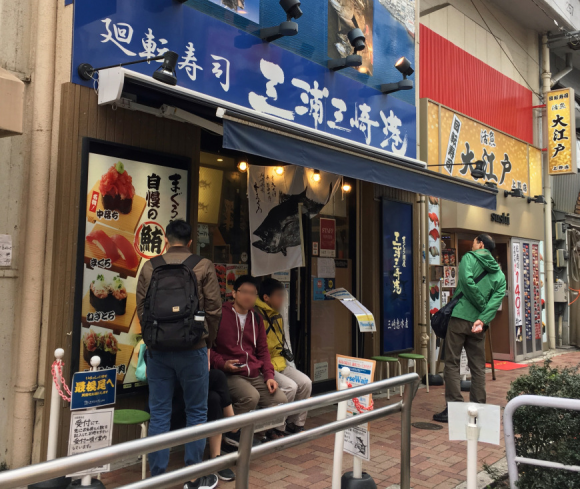
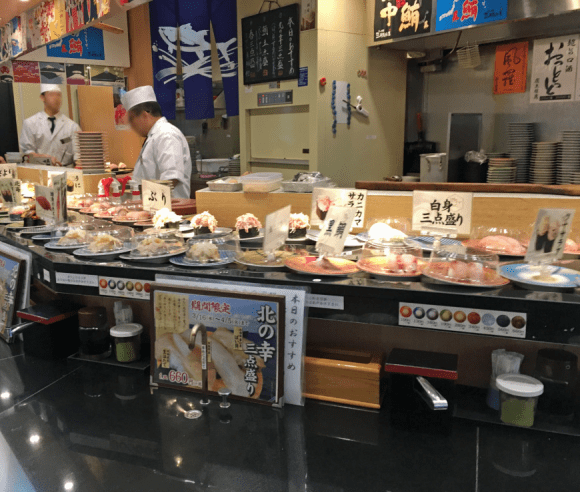
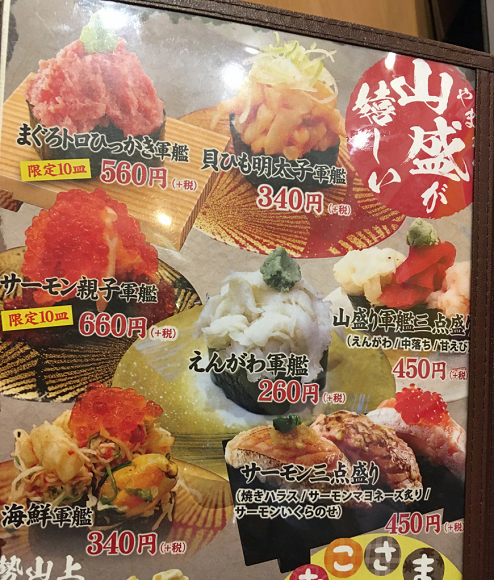
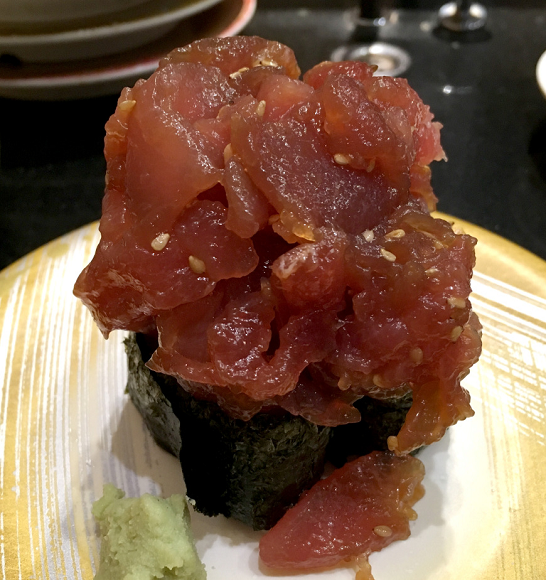
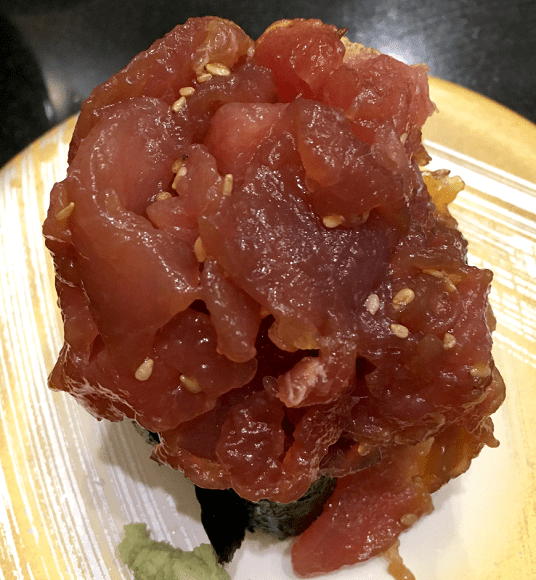
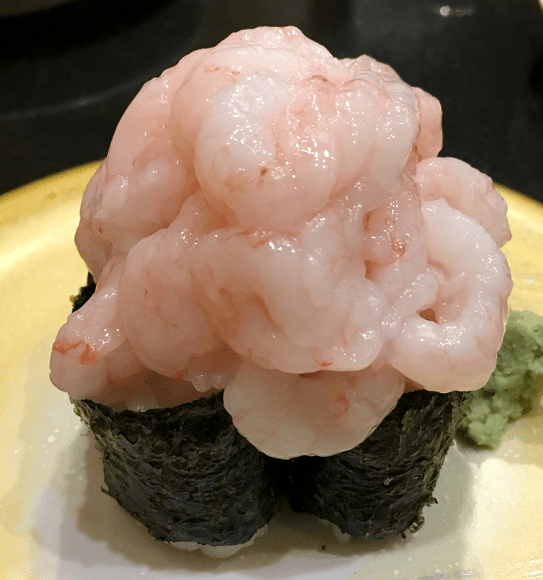
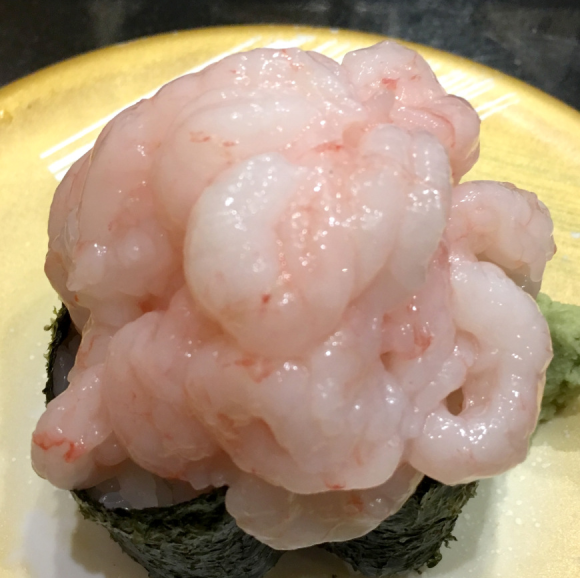
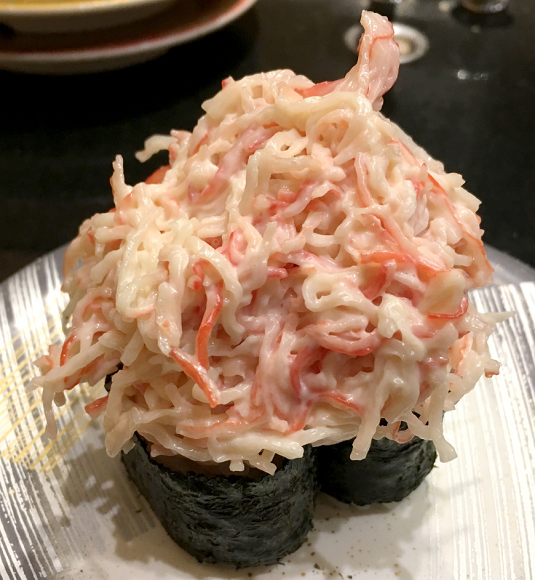
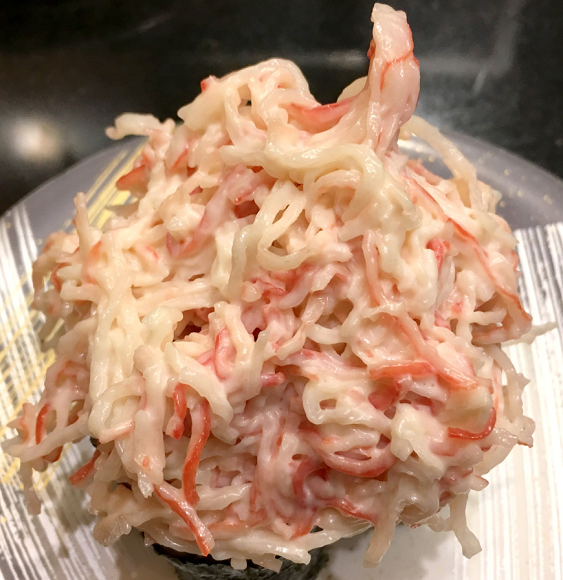
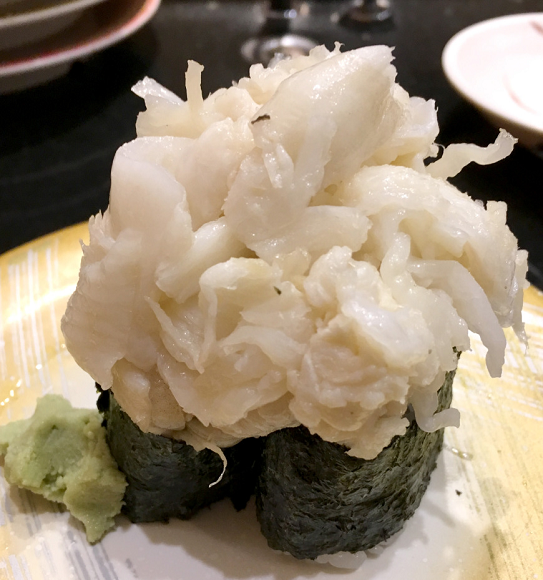
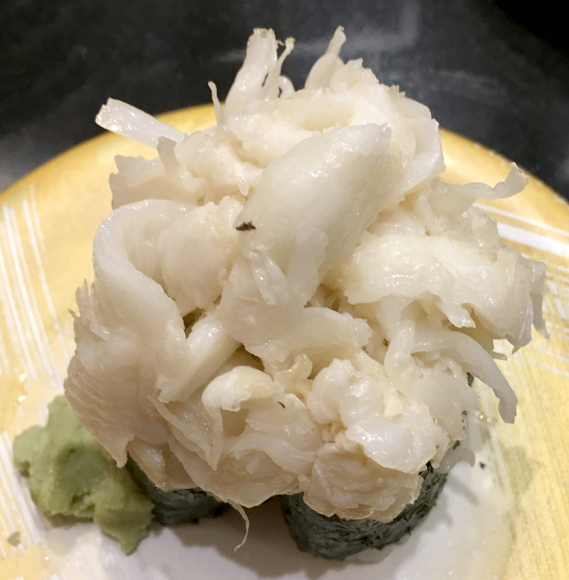
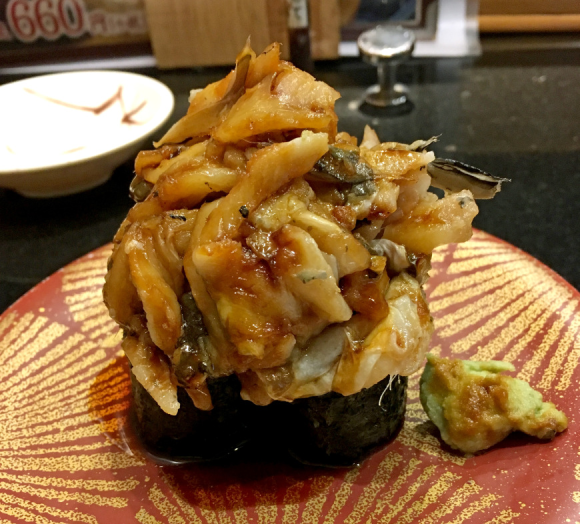

 Hungry in Tokyo’s Ueno? This restaurant’s all-you-can-eat sushi bowl deal is all you need
Hungry in Tokyo’s Ueno? This restaurant’s all-you-can-eat sushi bowl deal is all you need 10 Tokyo-area restaurants dieters should skip, but everyone else should definitely visit
10 Tokyo-area restaurants dieters should skip, but everyone else should definitely visit Why settle for a sushi bowl, when this restaurant will give you a sushi mountain?
Why settle for a sushi bowl, when this restaurant will give you a sushi mountain? Horsemeat sushi: For when you’re tired of spicy tuna and California rolls
Horsemeat sushi: For when you’re tired of spicy tuna and California rolls This restaurant’s US$0.45 sushi is an amazing way to expand your sushi horizons in Tokyo
This restaurant’s US$0.45 sushi is an amazing way to expand your sushi horizons in Tokyo Ramen restaurant’s English menu prices are nearly double its Japanese ones, denies discriminating
Ramen restaurant’s English menu prices are nearly double its Japanese ones, denies discriminating Here’s what our bachelor writers ate over the New Year’s holiday in Japan
Here’s what our bachelor writers ate over the New Year’s holiday in Japan Rakuten randomly offers 58 New Year’s osechi feasts in Japan, but did we get a star or a dud?
Rakuten randomly offers 58 New Year’s osechi feasts in Japan, but did we get a star or a dud? This quiet forest cafe in Japan lets you read all day in the house of a famous author
This quiet forest cafe in Japan lets you read all day in the house of a famous author Japan’s Top Twenty roadside service stops, destinations in their own right
Japan’s Top Twenty roadside service stops, destinations in their own right The heartwarming story of Japan’s “Weakling Gundam” and the fans who supported it in its hour of need
The heartwarming story of Japan’s “Weakling Gundam” and the fans who supported it in its hour of need That time Seiji called JASRAC to ask why he didn’t get paid royalties for his song being on TV
That time Seiji called JASRAC to ask why he didn’t get paid royalties for his song being on TV An overnight trip on the Sunrise Izumo, Japan’s awesome Tokyo-Shimane sleeper train【Photos】
An overnight trip on the Sunrise Izumo, Japan’s awesome Tokyo-Shimane sleeper train【Photos】 Japan has vending machines that put protective film on your phone for you — Here’s how to use them
Japan has vending machines that put protective film on your phone for you — Here’s how to use them Let’s try making our own Chinese McDonald’s Oreo-Spam burgers!【SoraKitchen】
Let’s try making our own Chinese McDonald’s Oreo-Spam burgers!【SoraKitchen】 Japanese beef bowl chain Sukiya’s 2026 Smile Box lucky bag basically pays for itself
Japanese beef bowl chain Sukiya’s 2026 Smile Box lucky bag basically pays for itself Starbucks Japan ready to get Year of the Horse started with adorable drinkware and plushies【Pics】
Starbucks Japan ready to get Year of the Horse started with adorable drinkware and plushies【Pics】 Hayao Miyazaki says Happy New Year to Studio Ghibli fans with new art for Year of the Horse
Hayao Miyazaki says Happy New Year to Studio Ghibli fans with new art for Year of the Horse Cup Noodle tries an authentic Jiro-style ramen, but something’s not quite right
Cup Noodle tries an authentic Jiro-style ramen, but something’s not quite right Top Japanese cosplayer Enako returns to Comiket after 6 years, creates mayhem with admirers
Top Japanese cosplayer Enako returns to Comiket after 6 years, creates mayhem with admirers The best Starbucks Japan Frappuccinos we want to drink again in 2026
The best Starbucks Japan Frappuccinos we want to drink again in 2026 We revisited Sweets Paradise after a decade to see if Japan’s dessert buffet still delivers
We revisited Sweets Paradise after a decade to see if Japan’s dessert buffet still delivers Pizza Hut Japan’s hot lucky bags are perfect for a New Year’s pizza party
Pizza Hut Japan’s hot lucky bags are perfect for a New Year’s pizza party Majority of Japanese mayors say foreign residents are essential but most see good and bad effects
Majority of Japanese mayors say foreign residents are essential but most see good and bad effects 7-Eleven Japan starts new temporary luggage storage service in over 300 branches
7-Eleven Japan starts new temporary luggage storage service in over 300 branches Disillusionment at Tsukiji’s tourist-target prices led us to a great ramen restaurant in Tokyo
Disillusionment at Tsukiji’s tourist-target prices led us to a great ramen restaurant in Tokyo Starbucks teams up with 166-year-old Kyoto doll maker for Year of the Horse decorations【Photos】
Starbucks teams up with 166-year-old Kyoto doll maker for Year of the Horse decorations【Photos】 Tokyo considering law requiring more trash cans following litter increase in heavily touristed area
Tokyo considering law requiring more trash cans following litter increase in heavily touristed area Tokyo’s Tsukiji sushi neighborhood asks tour groups to stay away for the rest of the month
Tokyo’s Tsukiji sushi neighborhood asks tour groups to stay away for the rest of the month Tokyo event lets you travel back in time, for free, to celebrate 100 years since Showa era start
Tokyo event lets you travel back in time, for free, to celebrate 100 years since Showa era start Japan may add Japanese language proficiency, lifestyle classes to permanent foreign resident requirements
Japan may add Japanese language proficiency, lifestyle classes to permanent foreign resident requirements Sanrio theme park in Japan announces plans to expand into a Sanrio resort
Sanrio theme park in Japan announces plans to expand into a Sanrio resort Lacquerware supplier to emperor of Japan and Pokémon team up for new tableware
Lacquerware supplier to emperor of Japan and Pokémon team up for new tableware Survey asks foreign tourists what bothered them in Japan, more than half gave same answer
Survey asks foreign tourists what bothered them in Japan, more than half gave same answer Japan’s human washing machines will go on sale to general public, demos to be held in Tokyo
Japan’s human washing machines will go on sale to general public, demos to be held in Tokyo Japan’s deadliest food claims more victims, but why do people keep eating it for New Year’s?
Japan’s deadliest food claims more victims, but why do people keep eating it for New Year’s? We deeply regret going into this tunnel on our walk in the mountains of Japan
We deeply regret going into this tunnel on our walk in the mountains of Japan Studio Ghibli releases Kodama forest spirits from Princess Mononoke to light up your home
Studio Ghibli releases Kodama forest spirits from Princess Mononoke to light up your home Major Japanese hotel chain says reservations via overseas booking sites may not be valid
Major Japanese hotel chain says reservations via overseas booking sites may not be valid Put sesame oil in your coffee? Japanese maker says it’s the best way to start your day【Taste test】
Put sesame oil in your coffee? Japanese maker says it’s the best way to start your day【Taste test】 No more using real katana for tourism activities, Japan’s National Police Agency says
No more using real katana for tourism activities, Japan’s National Police Agency says Starbucks Japan reveals new sakura drinkware collection, inspired by evening cherry blossoms
Starbucks Japan reveals new sakura drinkware collection, inspired by evening cherry blossoms Updated cherry blossom forecast shows extra-long sakura season for Japan this year
Updated cherry blossom forecast shows extra-long sakura season for Japan this year Haneda Market: Tokyo Station conveyor belt sushi restaurant is special on two days of the week
Haneda Market: Tokyo Station conveyor belt sushi restaurant is special on two days of the week Tokyo has a BLUE sushi restaurant with all-you-can-eat BLUE sushi for just 400 yen (US$3.50)
Tokyo has a BLUE sushi restaurant with all-you-can-eat BLUE sushi for just 400 yen (US$3.50) Sushi hot dogs and burgers on the menu at Japanese sushi restaurant【Taste Test】
Sushi hot dogs and burgers on the menu at Japanese sushi restaurant【Taste Test】 50 centimetres (20 inches) of unbridled beefy joy! Eating Tokyo’s extra-lengthy yukhoe sushi
50 centimetres (20 inches) of unbridled beefy joy! Eating Tokyo’s extra-lengthy yukhoe sushi Horse meat sushi restaurant opens up in Tokyo, becomes sushi’s latest craze 【Photos】
Horse meat sushi restaurant opens up in Tokyo, becomes sushi’s latest craze 【Photos】 Increasing number of women leave rice behind at revolving sushi train restaurants in Japan
Increasing number of women leave rice behind at revolving sushi train restaurants in Japan Meat lovers, you can now satisfy your carnivorous cravings at this revolving sushi restaurant!
Meat lovers, you can now satisfy your carnivorous cravings at this revolving sushi restaurant! Maguro mountain! Giant sashimi bowls of this Ginza restaurant are even bigger than promised
Maguro mountain! Giant sashimi bowls of this Ginza restaurant are even bigger than promised Japanese restaurant challenges diners to conquer “Mt Everest rice”
Japanese restaurant challenges diners to conquer “Mt Everest rice” What happens in the kitchen of a conveyor belt sushi restaurant? Let’s find out at Sushiro!
What happens in the kitchen of a conveyor belt sushi restaurant? Let’s find out at Sushiro! This Japanese restaurant chain’s triple-decker sushi bowls are a crazy feast for the eyes/stomach
This Japanese restaurant chain’s triple-decker sushi bowls are a crazy feast for the eyes/stomach Why does this sushi restaurant serve raw tuna in an ice cream cone?【Taste test】
Why does this sushi restaurant serve raw tuna in an ice cream cone?【Taste test】 Believe it or not, this isn’t a Tokyo vending machine – It’s a secret door to deliciousness
Believe it or not, this isn’t a Tokyo vending machine – It’s a secret door to deliciousness Best all-you-can-eat sushi in Tokyo? High-end restaurant wows with great value-for-money deal
Best all-you-can-eat sushi in Tokyo? High-end restaurant wows with great value-for-money deal Carb-free sushi? Japanese sushi restaurant ditches the rice in its new menu items
Carb-free sushi? Japanese sushi restaurant ditches the rice in its new menu items Japanese restaurant serves up the biggest sushi we’ve ever seen!
Japanese restaurant serves up the biggest sushi we’ve ever seen!
Leave a Reply